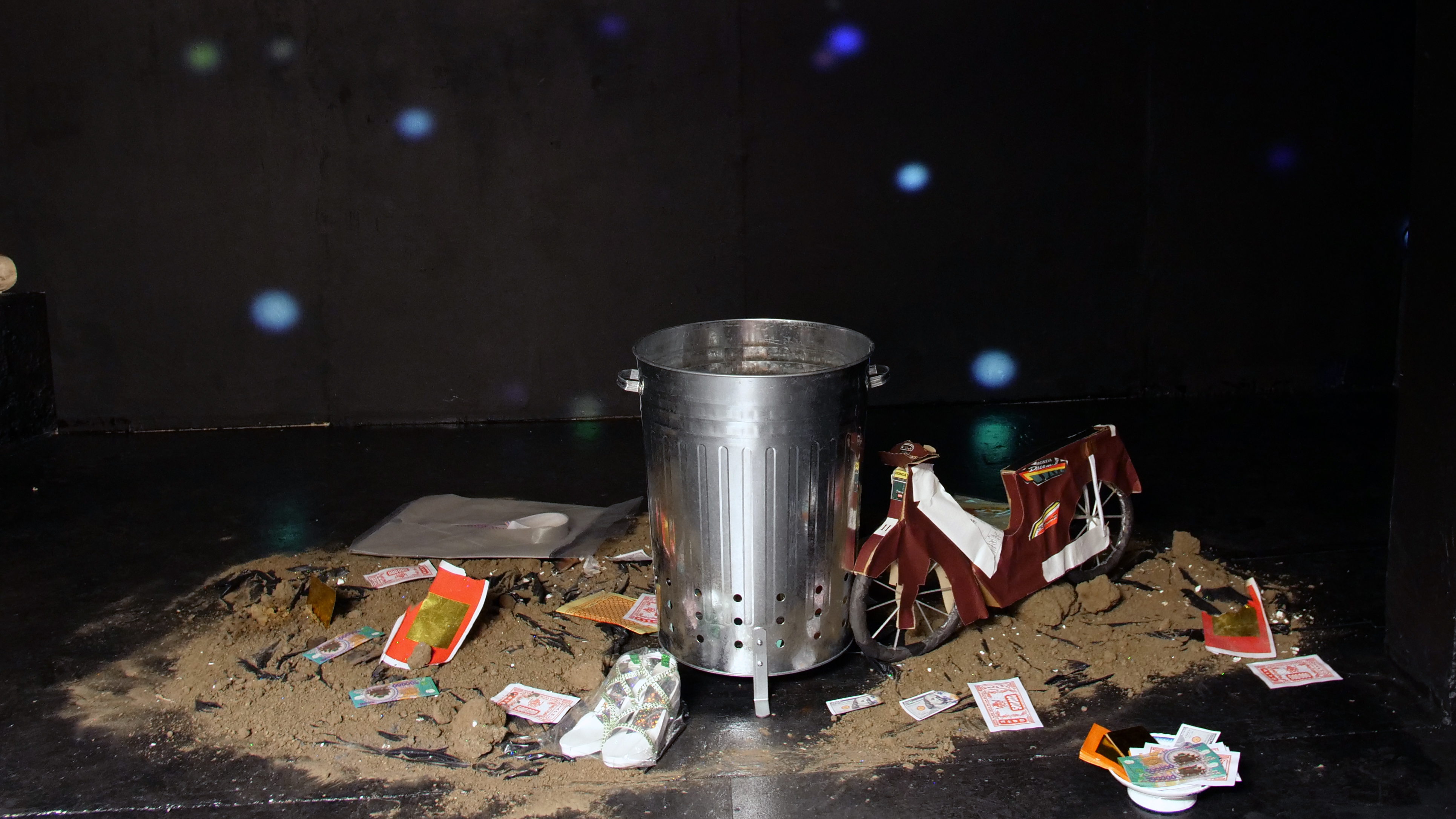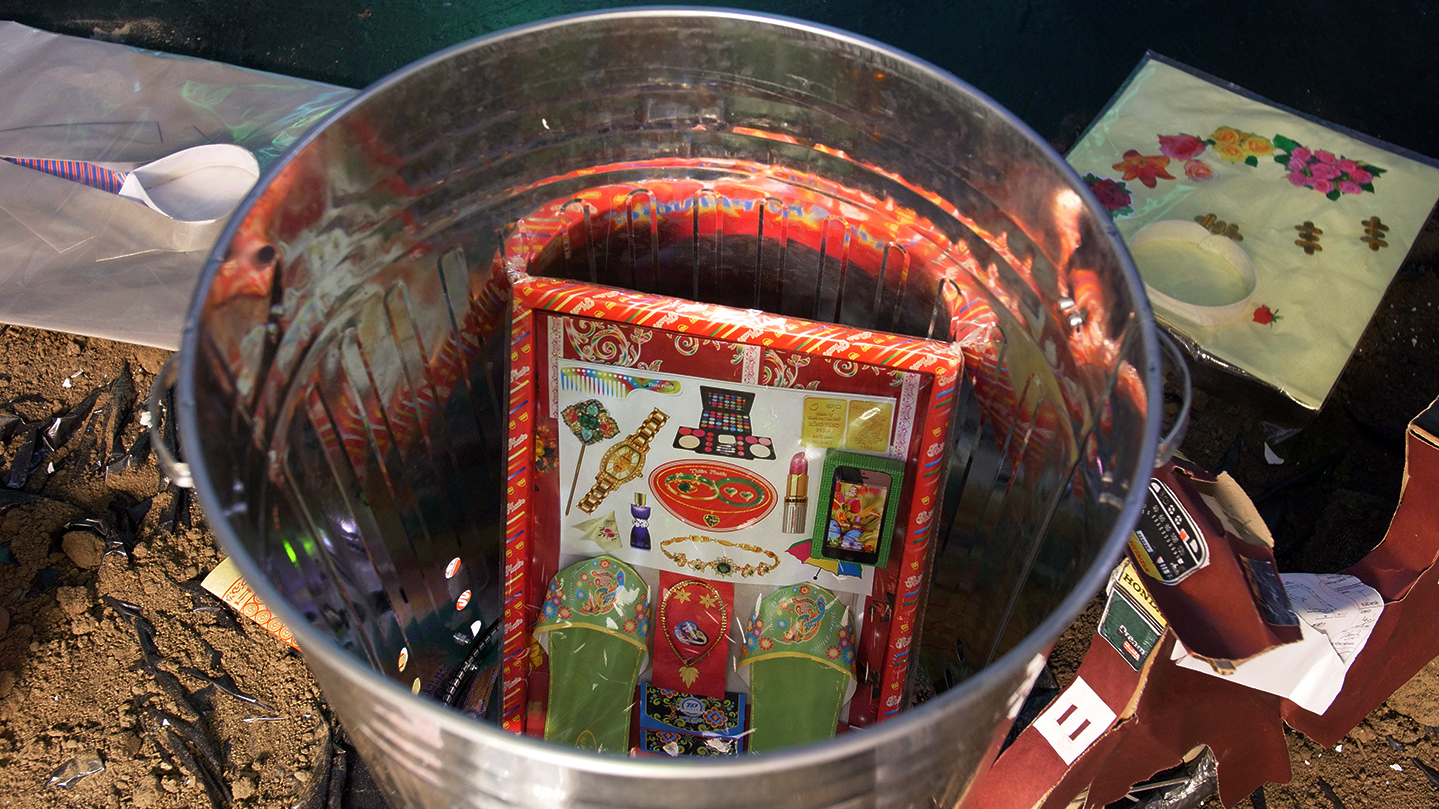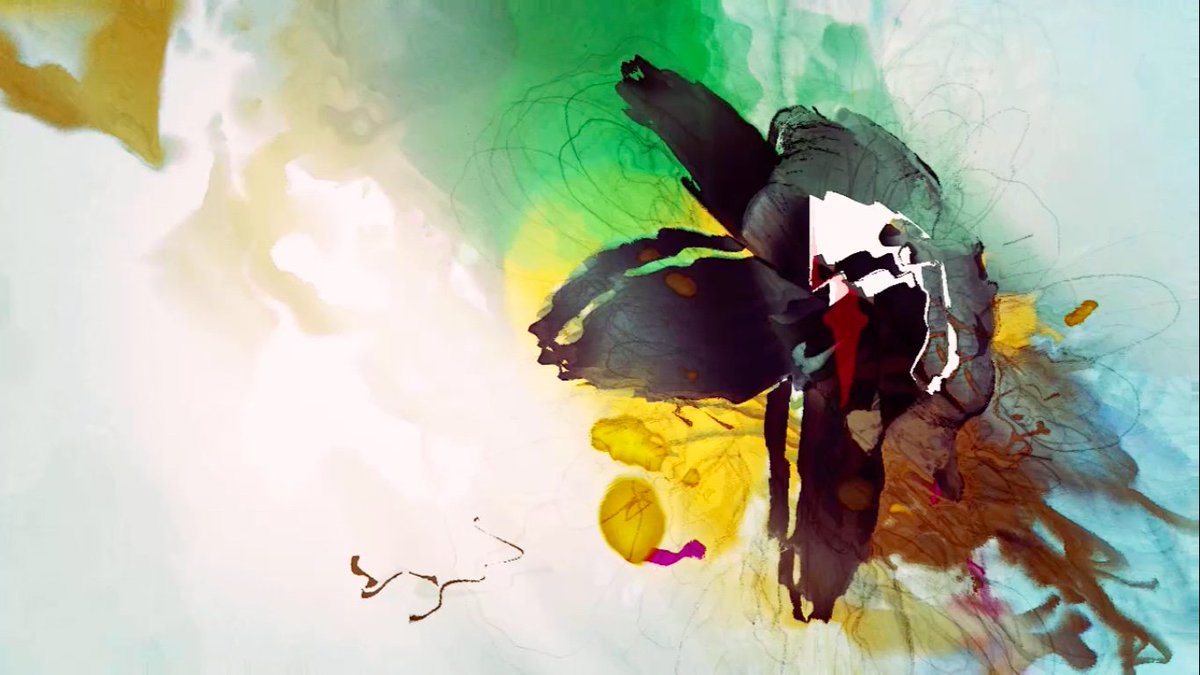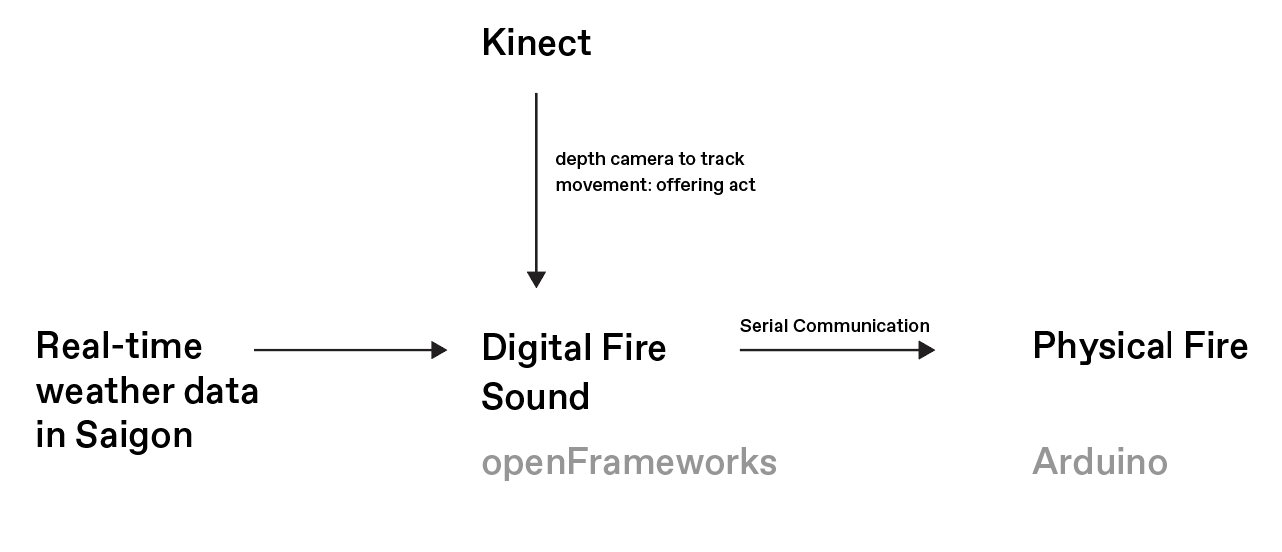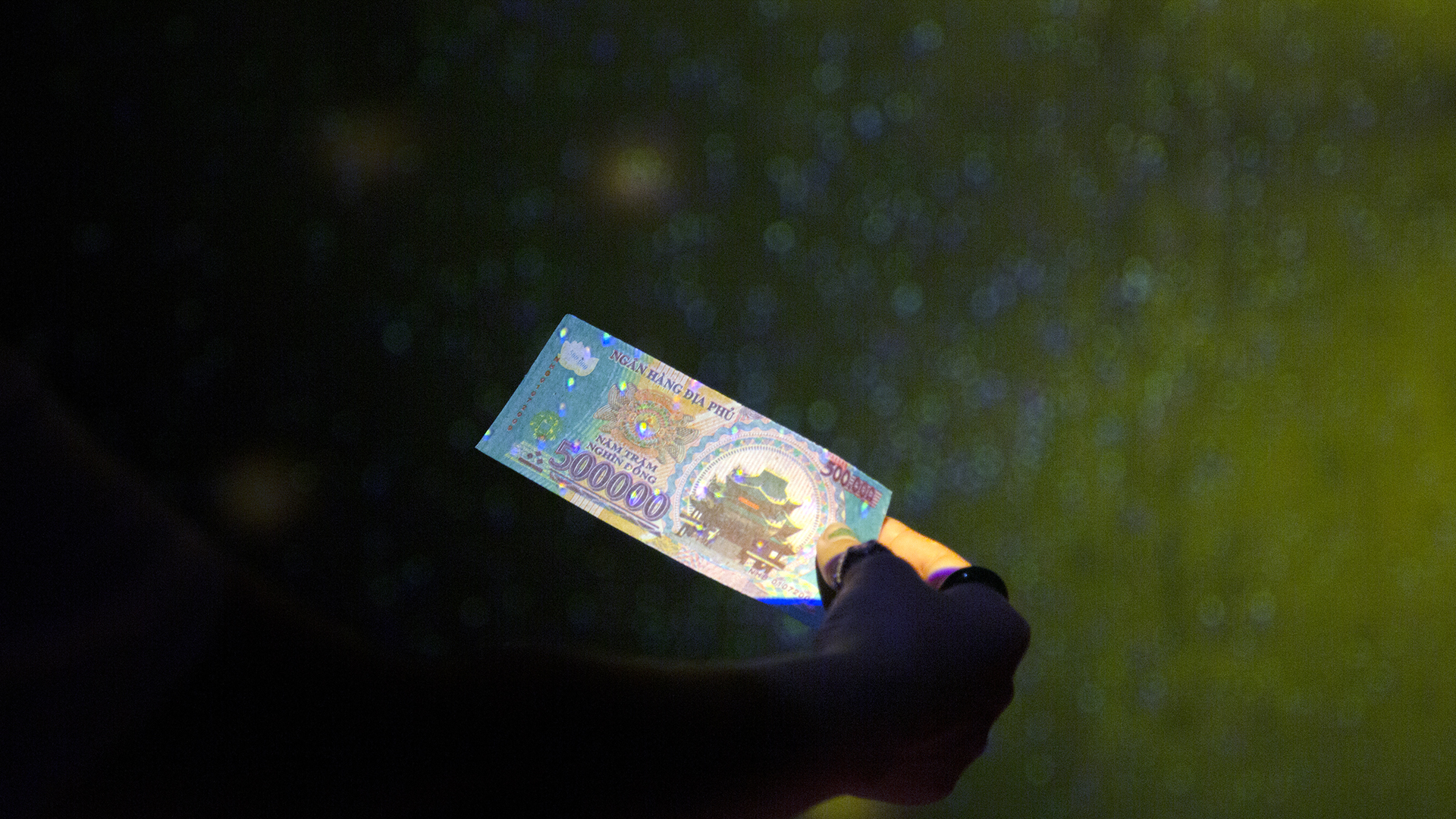Between Fire
An intersection of time and space, where a country's tradition is preserved and able to spread on despite borders.
produced by: Ivy Vo
Introduction
Between Fire is an immersive installation that explores burning ritual in Vietam, originating from “Animism” (“VN: Vạn vật hữu linh”) - the belief all the matters have souls, including us. Even when our deceased ancestors cross over, their souls still live on and exist in a parallel world. The Vietnamese want their ascendants to continue living in abundance. Amid numerous rituals and religious attempts to communicate between worlds, burning offers a dynamic gateway not only in spiritual connection but also in material outlet. For generations, people have been spending excessive money on votive offerings, in hope of exchanging it some future fortune, without realising how much resource wastage, and extreme pollution they also cause in their own lives.
This project raises the question of how computational arts can contribute to erosion of cultural values and practices, in this case, the falsifying of a tradition where it is no longer 'the thought that counts'. Can technology help preserve elements of culture in the Digital Age?
Concept and background research
Money can't buy you happiness, but money can buy you happiness in the afterlife. The custom of burning votive paper was practiced with the belief of the hereafter world as a mirror image of this world. The living people burned daily supplies and money made of paper with a view to providing the dead with necessary items. Both human bodies and material objects are essential to spiritual possession is what we believe. Vietnamdong, US dollars notes, cars, houses, villas, iPad, luxury designer brands, you name it, there is not a single thing in this world that doesn't have an imitated votive version. Every year, Vietnamese spend more than 30 million USD for burning votive paper for their ancestors. The tradition has been gradually distorted with the belief that excessive money spent on votive offering is better than expressing gratitude.
Video - In the middle of a burning act. The title claimed the cost of votive offering was 15 millions VND, equivalent to 476GPB
The fake vs. real motif inspires me to develop a digital ritual that mimics a long-standing tradition. My piece can be divided as two main elements: the physical world (real) and the ancestral world (fake/not real). In the physical world, there are real objects such as a burner, votive offering and ashes. In the ancestral world, there are the spirits waiting to be awaken. This setup implies a gateway between the present and the ancestral space, both sharing the same fire. The visitors become part of the artwork itself as the fires spread only when votive paper is offered.
Inital sketch and actual set-up
Here, the boundaries between the two worlds become blurred, the visitor becomes part of the artwork itself, and both worlds intertwine. This has the ability to change the relationships among people who are present within the same space. If the interactions of people with an artwork creates changes that we feel are beautiful, then the presence of us can in itself become a positive element, as talking about death and grief does not have to be sad and painful. As we immerse and meld ourselves into the piece, I want the visitors to explore a continuity among people, as well as a new relationship that transcends the boundaries between people and the world.
Influences
Coming from a graphic designer background, I have always inspired by organic shapes and contours of daily life and tried to incorpotate them to my work. The forms and shapes of life have been created over many years and have been molded by the interactions between people and life. We can perceive this long duration of time in these shapes themselves. By using the shapes, I believe we can explore the boundary in our perception of the long continuity of time, hence, the mesmerising and nostagic feelings delivered from the graphics in the piece.
Some of the influences came across and inspired this work are Kenichi Yoneda and teamLab. Kenichi Yoneda (Kynd) is an artist that paints with code (and mostly openFrameworks). His work of creating simulations of watercolour paintings has a big influence since I've started the course.
Lilium - Kynd
teamLab, needless to say, is well-known for their crafting skill in fanstatical digital world. Their work urges to open people’s mindsets and suggest an alternative way of living in today’s contemporary society. They take inspirations by cultural concepts that might have been lost in the past due to the incompatibility with modern times, which I can find a lot of relevance to my concept and idea.
teamLab - A Forest Where Gods Live
Technical
First, a diagram to illustrate interaction pipeline
Second, a poem to navigate the interaction order.
the spirits are watching,
take the offerings,
wave,
burn,
connect.
1. the spirits are watching
The key technology of this piece is openCV + Kinect Depth Sensor, where it tracks hand movement in complete darkness.
2. take the offerings,
This urges the visitors to pickup offering money on the tray.
3. wave
When there is hand movement tracked, 30000 particles will be draw along continuously. In order to keep the frame rate at least 30 fps, this is done by using VBO mesh.
Early stage & final result of the particle system
4. burn
In order to set fire when there is an act of waving and dropping offerings, I initially had to set a point on the screen that is level with top of the burner in the physical world. Then from that point, I created a neighbour zone (within the burner's diameter) that if the locations of the centroid from hand movements fall into, the digital fire will start.
The digital fire is real-time graphic, dictated by real-time weather data in the front door of my house in Saigon. Not only this creates more life to the visual, it also pays homage to Viet culture where we celebrate family value. The 3 factors that affecting the fire is wind speed, wind direction and humidity. The windier Saigon is, the bigger the fires become; the more humid the air is, the faster the fires die. Even though I only randomised the wind direction, it is a nice touch to set out different directions so every second. The humidity also plays a big part on the fire fbo, where it creates a flickering effect, to make the visual even feel more realistic.
Difference in wind speeds: left is 2m/s, right is 5m/s
When digital fire is ignited, openFrameworks will send serial data to Arduino and it will change the initial state of LED strip. If char sent from openFrameworks is 1, the brightness of the LED strip will be maximum, and if char is 0, brightess will be 0. This is how the physical fire is created.
5. connect
The fire presense trigger sound. If the fires are not intense, the sound of street vendor selling bread on the street will emerge, otherwise, a beautiful Nothern folk song will play. The choice of soundscape is a juxtaposition of daily casualness and tradition, as the sound through the speaker of the bread vendor is the sound I grew up with, while the folk song is something I cherish more as I get older. All the sounds intertwining together portrait connection of the physical world and the ancestral world, or in a metaphorically way, the digital world.
Future Development
This is my first real-time graphic project, hence, there are a lot of things to compromise regarding to the performance of the graphic and the serial communication between openFrameworks and Arduino. One thing that I'd like to improve is to get the brightness of the LED strip to react accordingly to the opacity of the fire on screen, not just store it in states.
The project could be taken further with more accurate tracking as right now it only tracks hands. The votive offering I used in my piece are mostly rectangles, this could lead to a smoother performance and interaction if I could develop my app the only track rectangles.
Last but not least, the set-up. With no constraint of budget and space, I'd love to install the set-up that I envisioned: reflecting floor so that the movement of the fires feels like reaching out and more hollistic. How can I make the 4 senses even feel stronger and more powerful?
Self Evaluation
Throughout my time at Goldsmiths, I realised my work has a close relationshion with my identity, a young Vietnamese creative. With Between Fire, I am able to introduce the beauty of my culture with both traditions and modernity as long as engage people with Vietnamese narration. I could see that my code, the way I use a specific technology as well as the concept, have more thoughts and layers to it. Overall, I think Between Fire is a success. I achieved all the goals that I set out. During the exhibition, watching people's reaction when the both the physical fire and digital fire light up at the same time was a joyous moment. I am one step deeper in digging and experiencing creating immersive performance and experience - the reason why I started the course.
References
Shiffman, D., 2021. The Nature of Code. [online] Natureofcode.com. Available at: <https://natureofcode.com/book/chapter-4-particle-systems/> [Accessed 25 August 2021].
2021. msw2 [online] openprocessing.com. Available at: <https://openprocessing.org/sketch/1178995> [Accessed 10 August 2021].
Tai, H., 2001. The country of memory. Berkeley: University of California Press.
Drummond, L. and Thomas, M., 2003. Consuming urban culture in contemporary Vietnam. London: Routledge.
Thanks
Yui for enlightening me with your knowledge
Duc, Nhan, Lil, Ciaran, Maddy for helping me with my horrible writing
Rob for helping me with Physical Computing and esp board
Max for helping me debugging
Pete for helping installing a lot of things
Lou, Elenor, Marlena and Catarina for being the cool neighbours and offering emotional supports
Catarina, Rob, Felix, Pietro, Ho Yin for lending me your camera and helping me documenting

































































